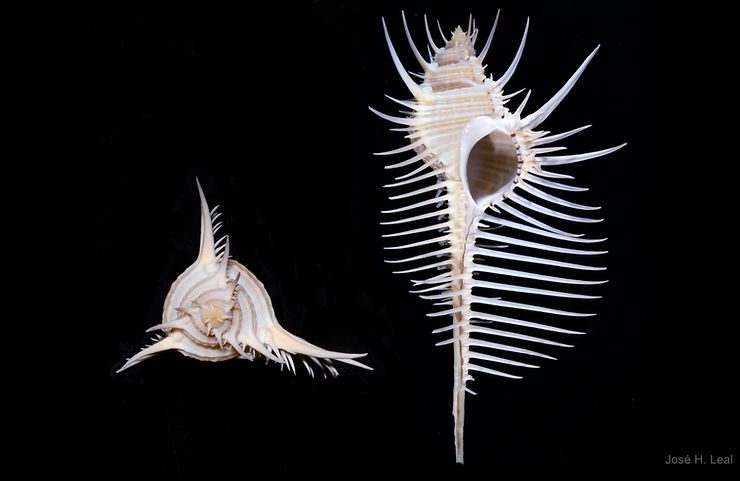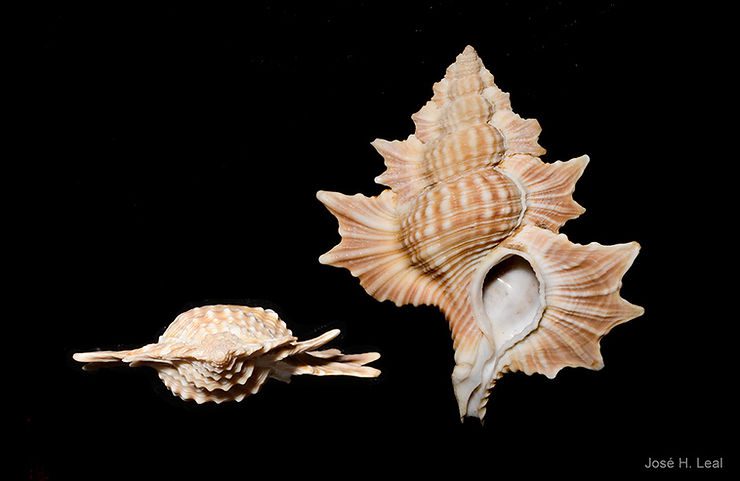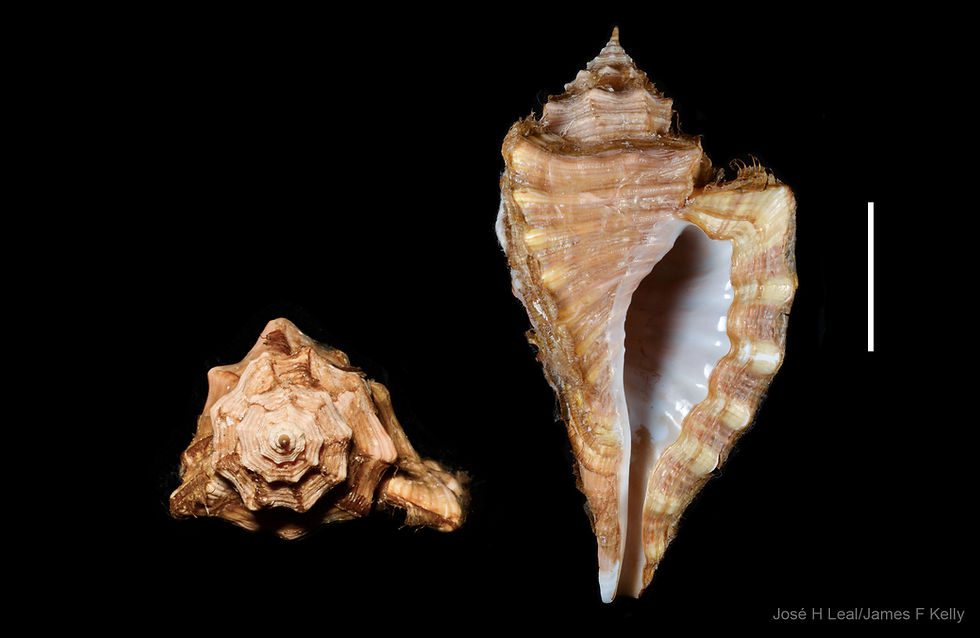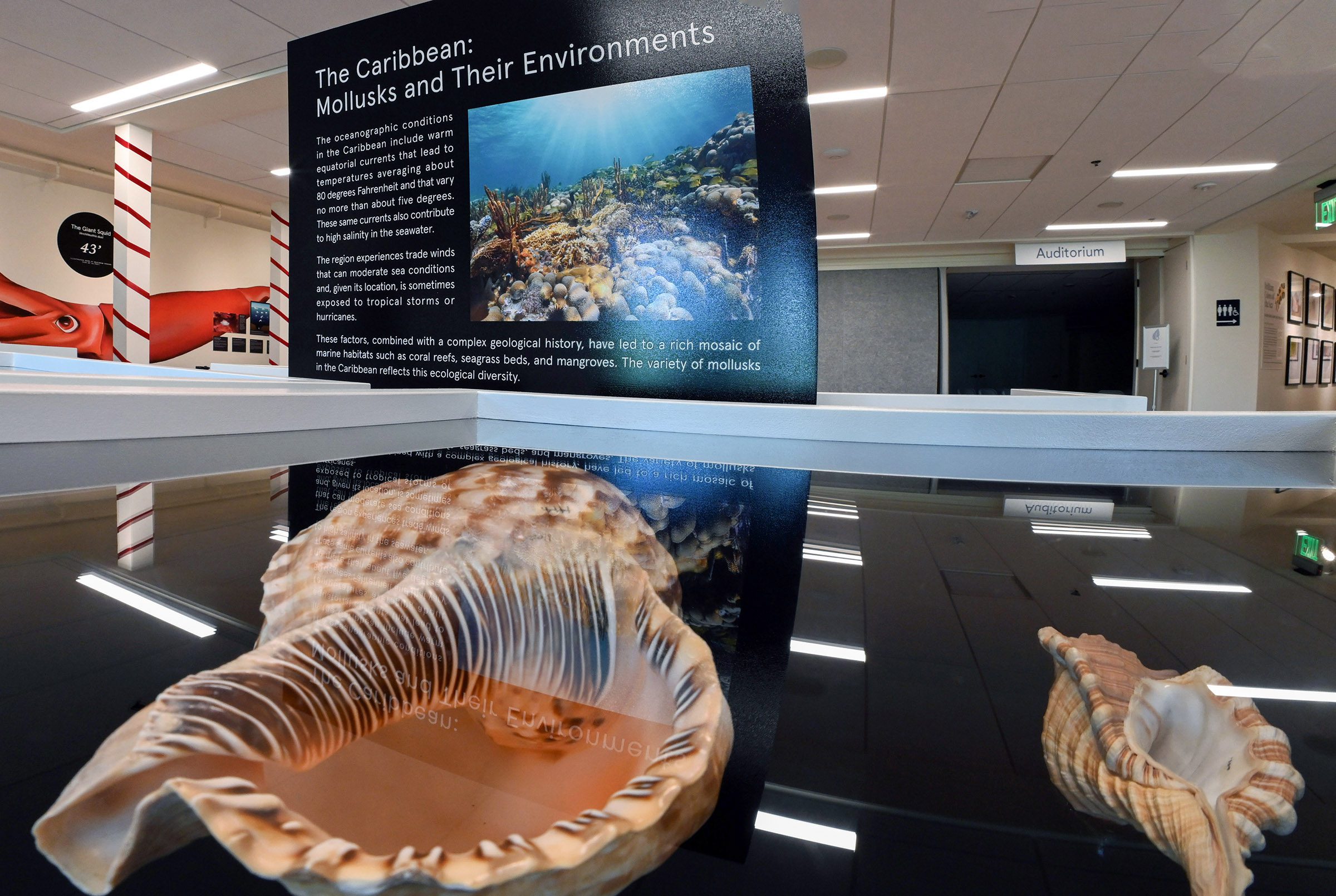Some of the most attractive shells of marine snails are distinguished by remarkable sculptures such as ridges, varices, and spines. Take, for instance, the Venus Comb Murex, with its rows of needle-like spines; the sturdy, keel-like varices of an Angular Triton; or the blade-like varices of a Maple Leaf Triton. These sculptures are built by the snail at recurring intervals. Their positions on the shell, outline, and structure define general shell shapes that may, among other advantages to the snails, deter predators, strengthen the shell, stabilize the animal during locomotion, or hold the shell flush against the surface the snail lives on.
 Venus Comb Murex, Murex pecten. Rows of spines repeated every 120 degrees.
Venus Comb Murex, Murex pecten. Rows of spines repeated every 120 degrees.
It has been suggested that the episodic production of these sculptures is controlled by feedback from the mantle (the snail’s “skin-like” layer that makes the shell.) If that is the case, the mantle “feels” at the right stage of shell growth that a previously laid ridge is now at the appropriate distance, cueing the snail to start forming a new sculpture.
 Maple Leaf Triton, Gyrineum perca, flat varices repeated every 180 degrees.
Maple Leaf Triton, Gyrineum perca, flat varices repeated every 180 degrees.
The results? When looking at such shells straight down the “tip,” or apex, sculptures often repeat at every 120° (e.g., Venus Comb Murex, many other murexes, tritons, helmet snails), but may also repeat every 180° (e.g., Maple Leaf Triton), 90° (e.g., some murex species), or occur apparently randomly (e.g., Vampire Snails in the genus Colubraria).
 Angula Triton, Cymatium femorale, sturdy varices repeated every 120 degrees.
Angula Triton, Cymatium femorale, sturdy varices repeated every 120 degrees.


